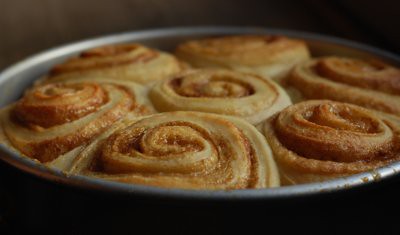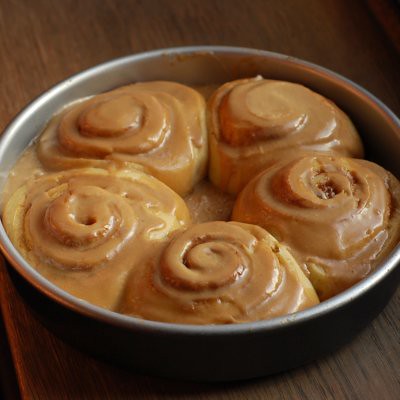
M is for Multi-grain Whole Wheat Harvest Bread
M is for Cindy Mushet, the creator of this recipe and author of
The Art and Soul of Baking, a new favorite in my cookbook library
My favorite way to eat this bread is toasted with smooth peanut butter and banana slices. It's just not the same on white bread.
1. Make The Cereal Mix: Pour the cereal into the medium bowl. Add the boiling water and stir to blend. Let the mixture sit for 20 minutes or refrigerate overnight (bring the mixture to room temperature before continuing).
2. Mix, Rest, And Knead The Dough: Pour the warm water into the bowl of the stand mixer. Add the sugar and yeast and whisk by hand to blend. Let sit for 10 minutes, or until the yeast is activated and foamy or bubbling. Add the cooled cereal, honey, bread flour, whole wheat flour, and salt. Knead the dough on low speed for 2 to 3 minutes. Cover the bowl with plastic wrap or a damp lint-free cotton towel and let the dough rest for 20 minutes to allow it to fully hydrate before further kneading. Turn the mixer to medium-low and continue to knead until the dough is firm and elastic, 4 to 7 minutes.
3. Rise The Dough (First Rise): Lightly oil the tub or bowl, scrape the dough into the tub, and lightly coat the surface of the dough with a little oil. Cover with plastic wrap or a damp lint-free cotton towel and let the dough rise until doubled in size, 35 to 45 minutes (longer if the room is cold). If you are using a tub, be sure to make the starting level of the dough with a piece of tape so it’s easy to tell when the dough has doubled.
4. Punch Down And Shape The Dough: Turn the dough out onto a lightly floured work surface. Press down on the dough firmly to expel some of the air bubbles, but don’t knead the dough again or it will be too springy and difficult to shape (if this happens, simply cover the dough with plastic wrap or a damp lint-free cotton towel and let it rest for 10 to 15 minutes to give the gluten some time to relax.) Shape into a round, taut loaf. If you are using a baking or pizza stone, transfer the loaf to the semolina-dusted pizza peel, or form a makeshift peel by lining the bottom of a baking sheet with parchment paper. If you are not using a baking stone, transfer the loaf to the center of a parchment-lined baking pan.
5. Proof The Dough (Second Rise): Lightly cover the dough with plastic wrap or a damp lint-free cotton towel and allow to rise until it is almost doubled and looks like it has taken a deep breath, 20 to 30 minutes.
6. Prepare The Oven: Place the baking or pizza stone in the oven. Preheat the oven to 400F. Be sure to allow 30 minutes to 1 hour for the stone to fully heat.
7. Bake The Loaf: Dust the top lightly with flour. Slash a pattern in the top of the dough with a lame, razor blade, or chef’s knife. If the dough is on a pizza peel, transfer to the baking stone; if on a baking sheet, simply set the baking sheet on the baking stone or oven rack. Bake for 40 minutes, or until the loaf is golden brown and the internal temperature registers 190F on an instant-read thermometer. If the crust is getting too brown and the loaf has not reached 190 degrees yet, tent the bread loosely with foil for the remainder of the baking time. Transfer to a rack and cool completely. Slice with a serrated knife.
M is for Mouthwatering, which this bread definitely is
M is for Mark, my husband, and Marjorie, my talk-to-everyday kind of friend,
who have eaten and complimented this loaf of bread
M is for Me, author of this blog, Marzipan, who made this bread, and if I can do it, you can too!
This is my poem about M. Lovely, eh?
Seriously, this bread is easy as long as you have the ingredients on hand. Most of the time is spent waiting for the dough to rise, and you can have a beautiful loaf from start to finish in 3 to 4 hours. So if you have half a day to hang around the house, bake some bread in between doing your laundry and writing poetry that doesn't rhyme.
My favorite way to eat this bread is toasted with smooth peanut butter and banana slices. It's just not the same on white bread.
Multi-grain Whole Wheat Harvest Bread
from the Art and Soul of Baking by Cindy Mushet
from the Art and Soul of Baking by Cindy Mushet
Makes one large round loaf
Note: The original recipe called for 9-grain cereal but you can substitute any multi-grain non-instant cereal. I happened to have 6-grain and 10-grain cereal in my pantry and have made this loaf with both. Bob's Red Mill is a common brand you can find in a well-stocked supermarket or health food store. You can also add a handful of sunflower or flax seeds to the dough in step 2 when adding the cooled cereal to the yeast mixture.
1/2 cup (3 ounces) 6- to 10-grain hot cereal mix (not instant) - see note above
1/2 cup boiling water
1 cup plus 2 tablespoons warm water (110 to 115F)
1 teaspoon sugar
1 tablespoon active dry yeast, or 2 1/4 teaspoons instant yeast
1/4 cup honey
2 3/4 cups bread flour or unbleached all-purpose flour
3/4 cup whole wheat flour
1 teaspoon salt
1/2 cup boiling water
1 cup plus 2 tablespoons warm water (110 to 115F)
1 teaspoon sugar
1 tablespoon active dry yeast, or 2 1/4 teaspoons instant yeast
1/4 cup honey
2 3/4 cups bread flour or unbleached all-purpose flour
3/4 cup whole wheat flour
1 teaspoon salt
1. Make The Cereal Mix: Pour the cereal into the medium bowl. Add the boiling water and stir to blend. Let the mixture sit for 20 minutes or refrigerate overnight (bring the mixture to room temperature before continuing).
2. Mix, Rest, And Knead The Dough: Pour the warm water into the bowl of the stand mixer. Add the sugar and yeast and whisk by hand to blend. Let sit for 10 minutes, or until the yeast is activated and foamy or bubbling. Add the cooled cereal, honey, bread flour, whole wheat flour, and salt. Knead the dough on low speed for 2 to 3 minutes. Cover the bowl with plastic wrap or a damp lint-free cotton towel and let the dough rest for 20 minutes to allow it to fully hydrate before further kneading. Turn the mixer to medium-low and continue to knead until the dough is firm and elastic, 4 to 7 minutes.
3. Rise The Dough (First Rise): Lightly oil the tub or bowl, scrape the dough into the tub, and lightly coat the surface of the dough with a little oil. Cover with plastic wrap or a damp lint-free cotton towel and let the dough rise until doubled in size, 35 to 45 minutes (longer if the room is cold). If you are using a tub, be sure to make the starting level of the dough with a piece of tape so it’s easy to tell when the dough has doubled.
4. Punch Down And Shape The Dough: Turn the dough out onto a lightly floured work surface. Press down on the dough firmly to expel some of the air bubbles, but don’t knead the dough again or it will be too springy and difficult to shape (if this happens, simply cover the dough with plastic wrap or a damp lint-free cotton towel and let it rest for 10 to 15 minutes to give the gluten some time to relax.) Shape into a round, taut loaf. If you are using a baking or pizza stone, transfer the loaf to the semolina-dusted pizza peel, or form a makeshift peel by lining the bottom of a baking sheet with parchment paper. If you are not using a baking stone, transfer the loaf to the center of a parchment-lined baking pan.
5. Proof The Dough (Second Rise): Lightly cover the dough with plastic wrap or a damp lint-free cotton towel and allow to rise until it is almost doubled and looks like it has taken a deep breath, 20 to 30 minutes.
6. Prepare The Oven: Place the baking or pizza stone in the oven. Preheat the oven to 400F. Be sure to allow 30 minutes to 1 hour for the stone to fully heat.
7. Bake The Loaf: Dust the top lightly with flour. Slash a pattern in the top of the dough with a lame, razor blade, or chef’s knife. If the dough is on a pizza peel, transfer to the baking stone; if on a baking sheet, simply set the baking sheet on the baking stone or oven rack. Bake for 40 minutes, or until the loaf is golden brown and the internal temperature registers 190F on an instant-read thermometer. If the crust is getting too brown and the loaf has not reached 190 degrees yet, tent the bread loosely with foil for the remainder of the baking time. Transfer to a rack and cool completely. Slice with a serrated knife.
















